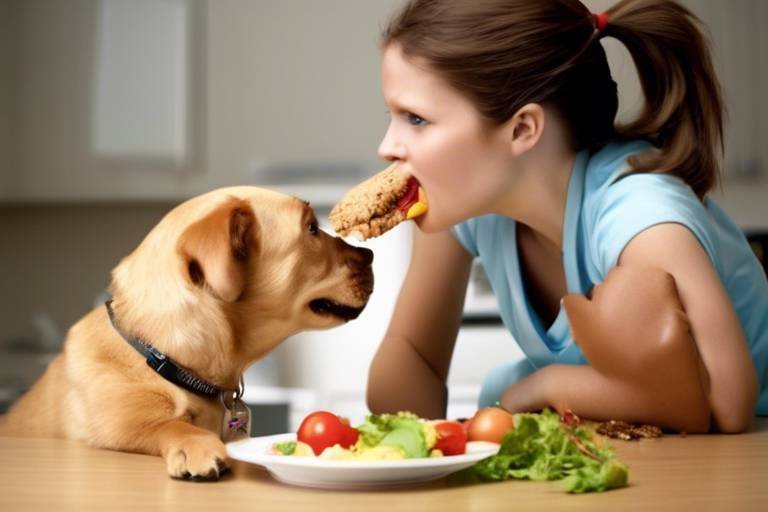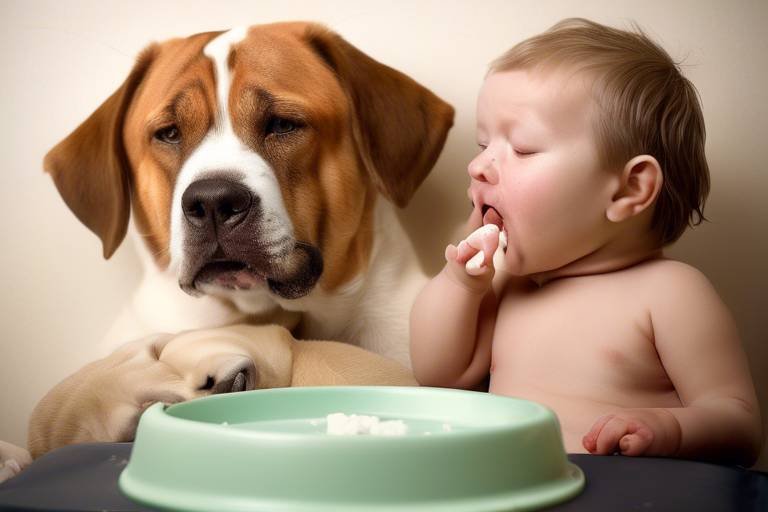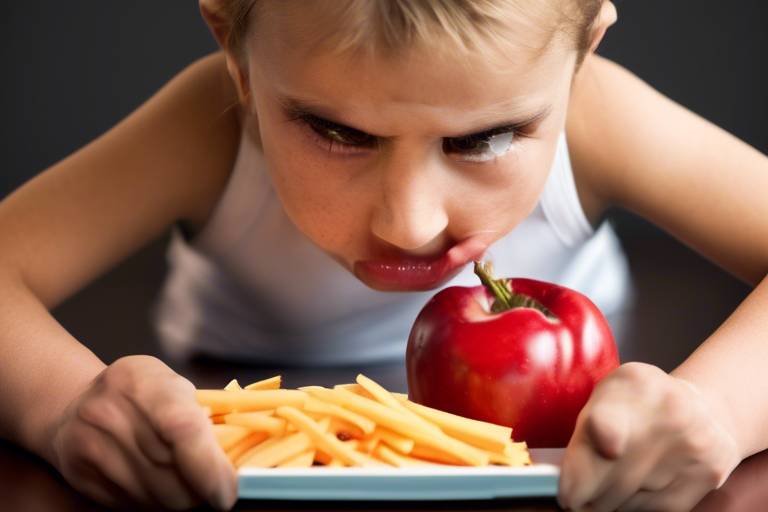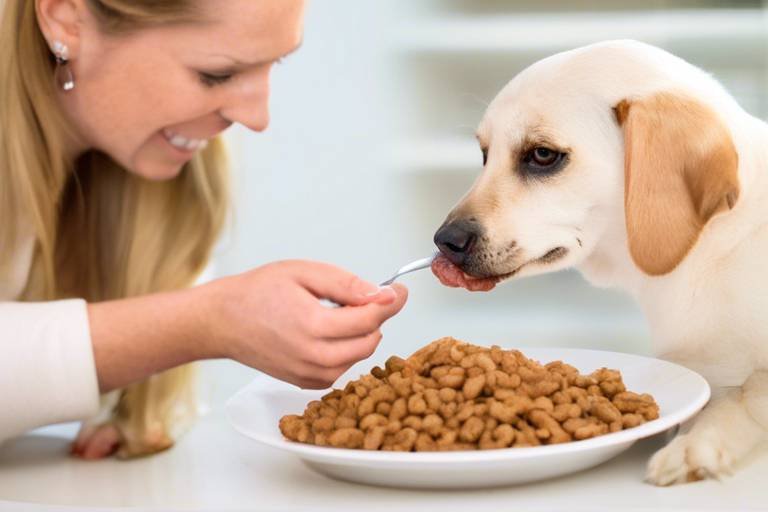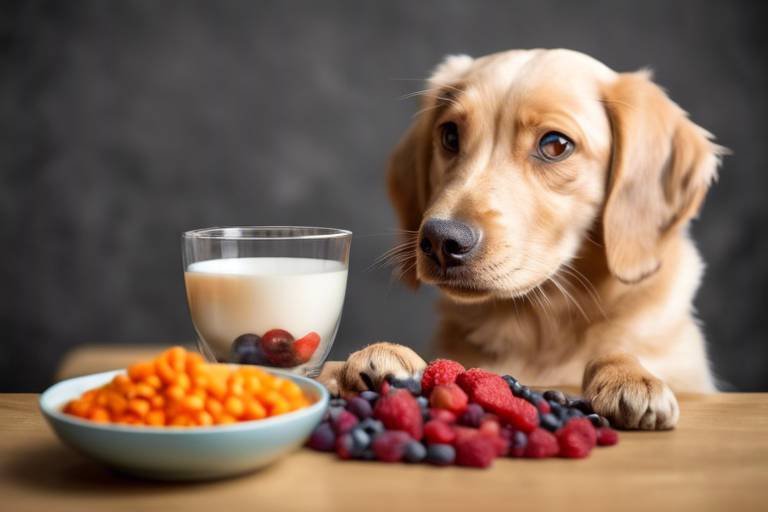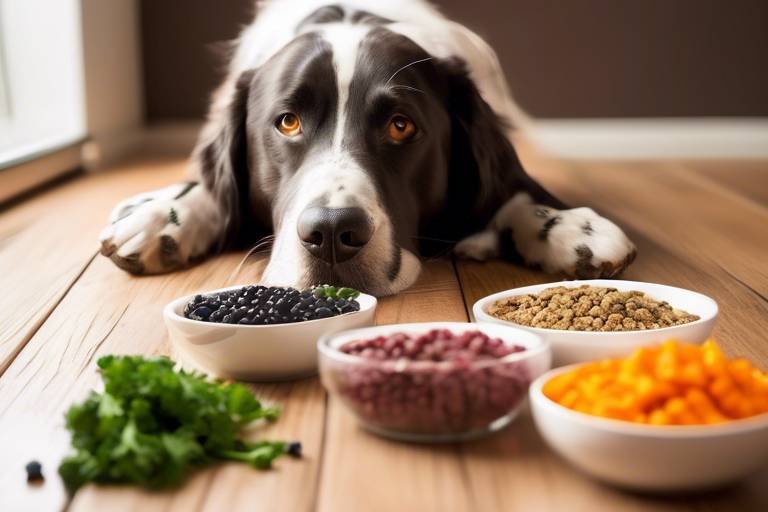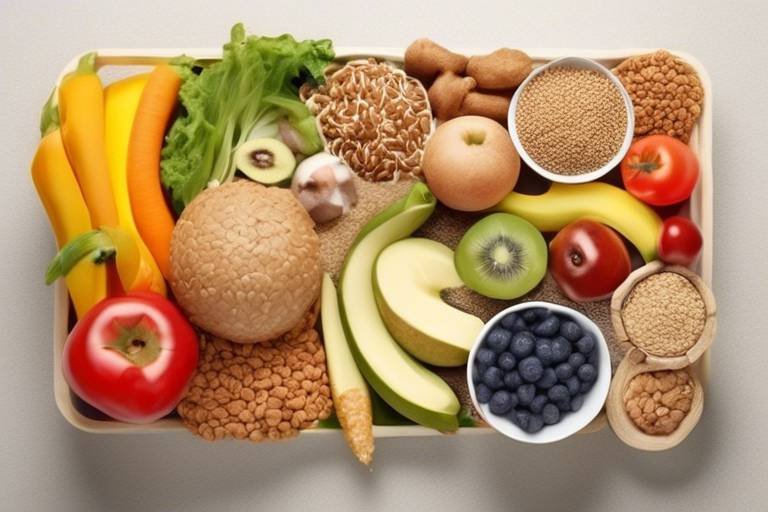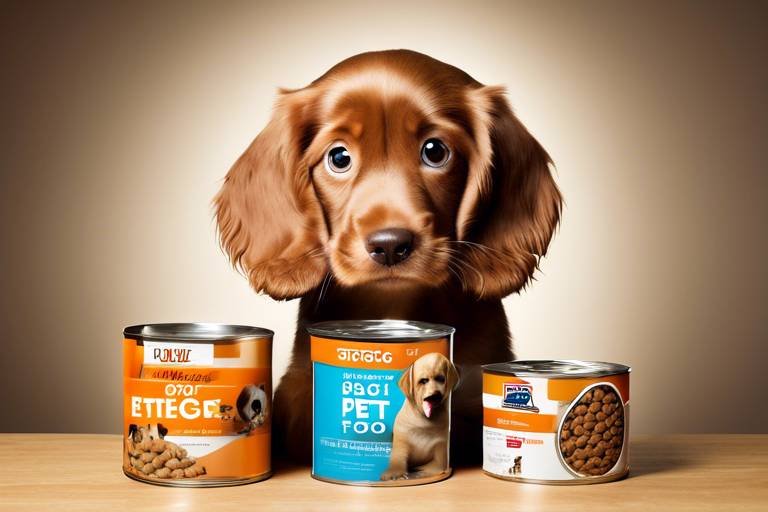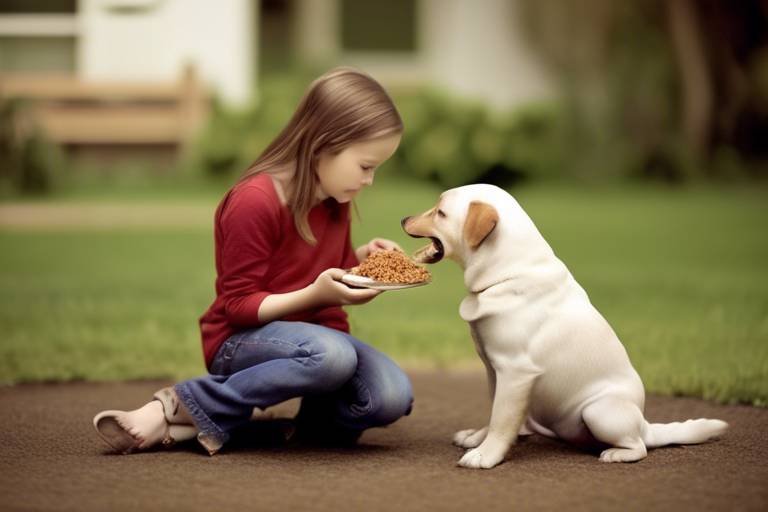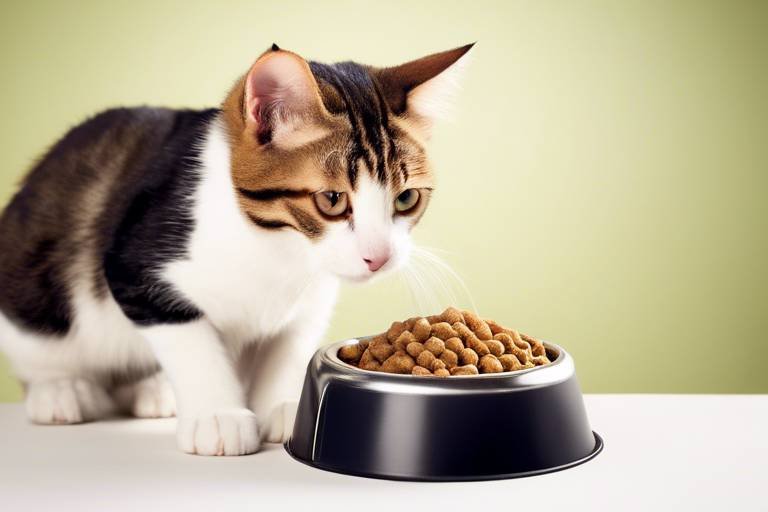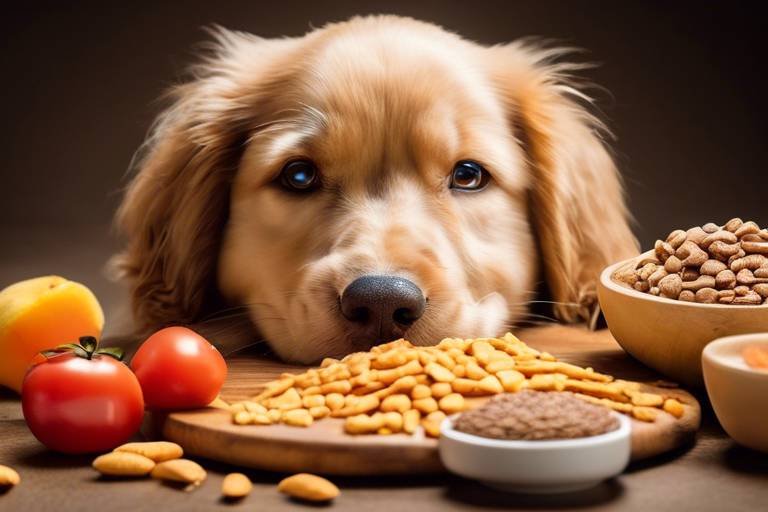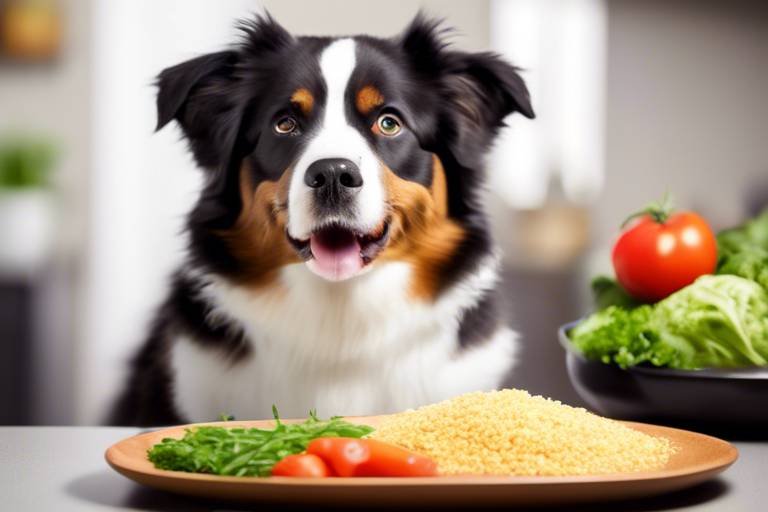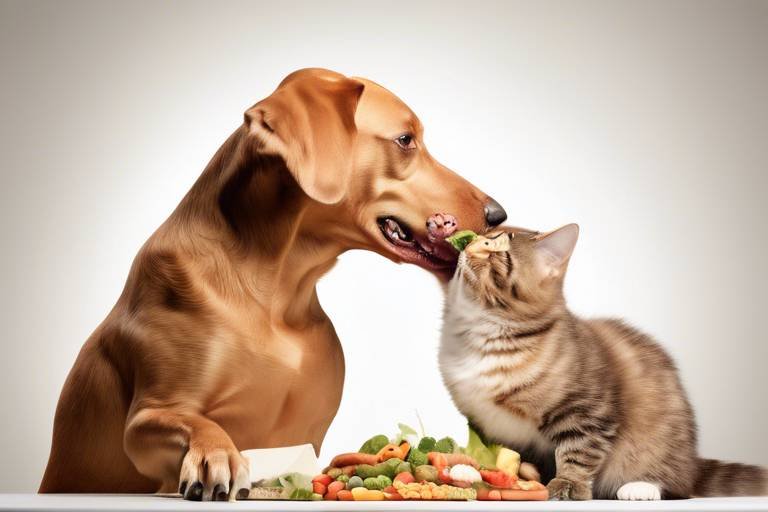The Importance of Training Your Pet to Eat Well
When it comes to our furry companions, their well-being often starts with the basics—like what they eat. Training your pet to eat well is not just about filling their bowl; it's about instilling healthy habits that can lead to a longer, happier life. Think of it this way: just as we wouldn't fuel our cars with the wrong type of gas, we shouldn't feed our pets anything less than the best. Proper nutrition is essential for maintaining their energy levels, ensuring a shiny coat, and keeping their immune system strong. So, how do we go about this? Let's dive into the importance of training our pets to eat well and explore some effective strategies to make mealtime a positive experience.
Every pet has unique nutritional requirements based on their age, breed, and health status. Understanding these needs is crucial for providing the right diet that supports their growth and vitality. For instance, puppies and kittens have different caloric needs compared to adult pets. Similarly, senior pets may require diets that are lower in calories but higher in fiber to maintain their health. It's essential to consult with your veterinarian to tailor a diet that meets your pet's specific needs. This personalized approach not only boosts their health but also enhances their overall well-being.
Creating a consistent feeding routine helps pets understand when to eat, reducing anxiety and promoting better digestion. Just like humans thrive on routine, pets benefit from a structured schedule. Feeding them at the same times each day can help regulate their digestive systems and prevent overeating. Moreover, a predictable schedule helps pet owners manage portion control effectively. Imagine your pet's excitement as they learn that mealtime is a special event, a time to look forward to! So, set a schedule and stick to it—your pet will thank you.
Selecting high-quality food tailored to your pet's specific needs is essential. The pet food aisle can be overwhelming, with countless options vying for your attention. To make informed choices, it's important to read labels carefully. Look for foods that list meat as the first ingredient and avoid those with fillers like corn and soy. Additionally, consider your pet's specific needs—some may require grain-free options, while others might benefit from added omega fatty acids for a healthier coat. Remember, you wouldn't want to compromise your own meals, so why would you do it for your pet?
Proper portion control is vital for maintaining a healthy weight. Overfeeding can lead to obesity, which is a serious health risk for pets. To avoid this, consider using measuring cups or a kitchen scale to ensure you're giving the right amount of food. It’s also helpful to read the feeding guidelines on your pet food packaging as a starting point. Keep in mind that these are just guidelines; your pet's activity level and metabolism can influence how much they should eat. By being diligent about portion control, you're investing in your pet's long-term health.
Using positive reinforcement techniques can encourage healthy eating habits. Just like humans, pets respond well to rewards. You can use treats or praise to encourage your pet to try new foods or stick to their feeding schedule. For example, if your dog finishes their meal on time, reward them with a fun toy or an extra play session. This not only makes mealtime enjoyable but also reinforces the idea that eating well is a good thing. It's all about creating a positive association with healthy eating!
Feeding pets table scraps can lead to unhealthy eating patterns. While it may be tempting to share your leftovers, many human foods can be harmful to pets. Foods like chocolate, grapes, and onions are toxic, and even seemingly harmless items can upset their stomachs. Instead of sharing your meals, consider preparing special pet-friendly treats that they can enjoy without risking their health. This way, you can still bond with your pet during mealtime without compromising their well-being.
Some pets can be notoriously picky about their food. If you find yourself battling a finicky eater, don't despair! There are effective strategies to encourage reluctant eaters to consume their meals without resorting to unhealthy options. Try mixing a small amount of wet food with their dry kibble to enhance flavor and smell. You can also warm their food slightly to release enticing aromas. Remember, patience is key—over time, your pet will learn to appreciate their meals.
Regularly assessing your pet's health is essential to ensure they are thriving on their diet. Keep an eye out for signs of nutritional deficiencies, such as dull fur, lethargy, or digestive issues. If you notice any concerning symptoms, don't hesitate to consult a veterinarian. They can provide guidance on dietary adjustments and recommend supplements if necessary. Proactive monitoring can help you catch potential issues early, ensuring your pet remains healthy and happy.
Training your pet to eat well is a family affair. When everyone in the household is on the same page about feeding practices, it creates a consistent and supportive environment for your pet. Make it a fun activity—have family members take turns feeding the pet or preparing their meals. This involvement not only fosters responsibility but also strengthens the bond between your pet and your family. After all, a well-fed pet is a happy pet!
- What should I do if my pet refuses to eat? Try offering different types of food or consult your vet for advice.
- How can I tell if I'm overfeeding my pet? Monitor their weight and consult feeding guidelines based on their size and activity level.
- Is it okay to give my pet treats? Yes, but make sure they are healthy and account for them in your pet's daily caloric intake.

Understanding Nutritional Needs
Every pet is as unique as a snowflake, and just like humans, their nutritional needs vary based on several factors. Age, breed, size, and health status play a significant role in determining what kind of food will best support your furry friend’s vitality. For instance, a sprightly puppy has different dietary requirements compared to a senior dog who may be dealing with health issues. Understanding these needs is crucial for providing the right diet that supports their growth and overall well-being.
When it comes to nutrition, it's essential to think of your pet as a little athlete. They need the right fuel to thrive. For example, high-energy breeds like Border Collies require a diet rich in protein and healthy fats to keep them active and engaged. On the other hand, a more sedentary breed, such as a Bulldog, might need a diet lower in calories to prevent obesity. This means you must pay close attention to the ingredients in their food, ensuring it meets their specific needs.
To help you navigate the world of pet nutrition, here’s a quick breakdown of the primary nutrients your pet needs:
| Nutrient | Function | Sources |
|---|---|---|
| Proteins | Builds and repairs tissues, supports immune function | Meat, fish, eggs, legumes |
| Fats | Provides energy, supports cell structure, and aids in nutrient absorption | Fish oil, chicken fat, flaxseed |
| Carbohydrates | Provides energy and aids in digestion | Grains, vegetables, fruits |
| Vitamins & Minerals | Supports various bodily functions and overall health | Leafy greens, fruits, supplements |
It's also important to consult with your veterinarian to tailor a diet that fits your pet's specific needs. They can help you understand how to balance these nutrients effectively. For instance, if your pet has a sensitive stomach, they may benefit from a diet that is easier to digest, such as one that includes more fiber. Similarly, if your pet is prone to allergies, your vet can guide you towards hypoallergenic options that will keep them healthy and happy.
In summary, understanding your pet's nutritional needs is the first step in ensuring they live a long, healthy life. By paying attention to their unique requirements and consulting with professionals, you can provide a diet that promotes their growth, energy, and overall well-being. Remember, a well-fed pet is a happy pet!

Establishing a Feeding Schedule
Creating a consistent feeding routine for your pet is like setting a reliable clock in your home—once it’s in place, everything else falls into rhythm. Just imagine how much more peaceful your mornings would be if you knew exactly when to expect that wagging tail or soft purr, eagerly anticipating mealtime! Establishing a feeding schedule not only helps your pet understand when to eat, but it also plays a crucial role in reducing anxiety and promoting better digestion. Think of it as a comforting ritual that signals to your furry friend that it’s time to enjoy their meal.
When you decide on a feeding schedule, consider your pet's unique needs. Factors like age, breed, and health status can influence how often and how much they should eat. For instance, puppies and kittens typically require more frequent meals compared to adult pets. On the other hand, senior pets might benefit from smaller, more digestible portions spread throughout the day. Here’s a simple table to illustrate a general feeding schedule for different life stages:
| Life Stage | Feeding Frequency |
|---|---|
| Puppies (up to 6 months) | 3-4 times a day |
| Adult Dogs (1-7 years) | 2 times a day |
| Senior Dogs (7+ years) | 1-2 times a day |
| Kittens (up to 6 months) | 3-4 times a day |
| Adult Cats (1-7 years) | 2 times a day |
| Senior Cats (7+ years) | 1-2 times a day |
Once you’ve determined how often to feed your pet, it’s essential to stick to that schedule as closely as possible. Consistency is key! Just like humans thrive on routine, pets flourish when they know what to expect. By feeding them at the same times each day, you can help regulate their digestion and metabolism, which can prevent issues like obesity and digestive upset. Moreover, a structured schedule can assist in managing portion control effectively, reducing the temptation to overindulge.
It’s also important to consider the environment during mealtime. Ensuring a calm and quiet space can help your pet focus on their food and enjoy their meal without distractions. If your pet tends to rush through their meals, you might want to try using puzzle feeders or slow-feed bowls. These tools can turn mealtime into a fun activity, encouraging your pet to eat at a healthier pace.
In conclusion, establishing a feeding schedule is not just about filling a bowl with food. It’s about creating a nurturing routine that fosters a sense of security and well-being for your pet. By understanding their specific needs and sticking to a consistent feeding time, you can significantly enhance their overall health and happiness. So, why not start today? Your furry friend will thank you with wagging tails and gentle purrs!
Q: How do I know if I am feeding my pet the right amount?
A: Monitoring your pet's weight and body condition is crucial. Consult your veterinarian for tailored advice on portion sizes based on your pet's specific needs.
Q: Can I adjust my pet's feeding schedule?
A: Yes, you can adjust the feeding schedule as needed, but do it gradually to avoid upsetting their digestive system. Always pay attention to how your pet responds to changes.
Q: What if my pet refuses to eat at the scheduled time?
A: If your pet consistently refuses to eat, consult your veterinarian to rule out any underlying health issues. Sometimes, a change in food or feeding method can help.
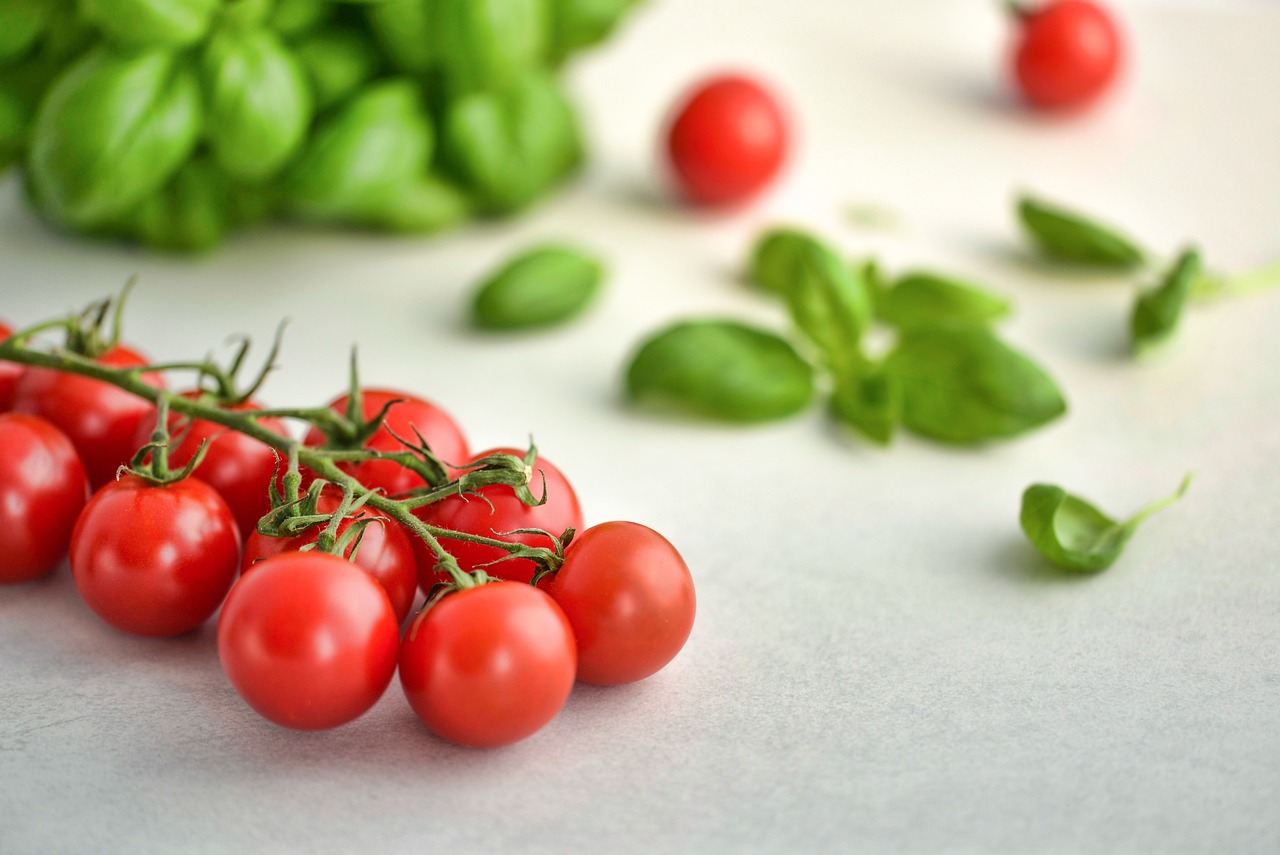
Choosing the Right Food
When it comes to feeding your furry friend, the choices can feel overwhelming. With so many brands, formulas, and types of pet food on the market, how do you know what’s best for your pet? It's almost like walking through a candy store but instead of sweets, you’re faced with a plethora of kibble and canned options! The first step in making the right choice is to understand that every pet is unique, and their dietary needs can vary widely. Factors such as age, breed, size, and health conditions play a significant role in determining the right food.
One of the most important things to do is to read the labels. Pet food labels can tell you a lot about the nutritional value of the food. Look for keywords like “complete and balanced,” which indicates the food meets the nutritional standards set by the Association of American Feed Control Officials (AAFCO). It’s also essential to pay attention to the ingredients list. A good rule of thumb is that the first ingredient should be a high-quality source of protein, like chicken or beef, rather than fillers such as corn or soy.
To help you navigate the world of pet food, here’s a quick breakdown of what to look for:
| Category | What to Look For | What to Avoid |
|---|---|---|
| Protein Sources | High-quality meat or fish | By-products or unnamed meats |
| Grains | Whole grains like brown rice or oats | Excessive fillers like corn or wheat |
| Fats | Animal fats or fish oils | Artificial preservatives |
| Vitamins & Minerals | Added nutrients for balance | Lack of essential nutrients |
Additionally, consider your pet's specific needs. For example, if your dog is a senior, they may require a diet lower in calories but higher in fiber to maintain a healthy weight. On the other hand, a growing puppy will need more protein and calories to support their development. Remember, what works for one pet may not work for another, much like how we all have our own dietary preferences and requirements.
Another critical aspect is the type of food: dry, wet, or raw. Dry food is convenient and helps with dental health, while wet food can be more palatable and hydrating. Raw diets are becoming increasingly popular, but they require careful handling and preparation to avoid health risks. It’s crucial to consult with your veterinarian before making any significant changes to your pet's diet, especially if you're considering a raw food diet.
In conclusion, choosing the right food for your pet is not just about picking a bag off the shelf; it’s about understanding their unique needs and making informed decisions. By focusing on high-quality ingredients, reading labels carefully, and considering your pet's specific dietary requirements, you can set them up for a lifetime of health and happiness.
- How do I know if my pet is allergic to their food?
If your pet shows signs like itching, digestive upset, or unusual behavior after eating, it could indicate a food allergy. Consult your vet for a proper diagnosis. - Can I mix different types of pet food?
Mixing foods can be done, but it’s best to transition gradually to avoid digestive issues. Always consult your vet for personalized advice. - Is grain-free food better for my pet?
Grain-free diets can be beneficial for some pets, especially those with allergies, but they are not inherently better. It's essential to consider your pet's overall health and dietary needs.
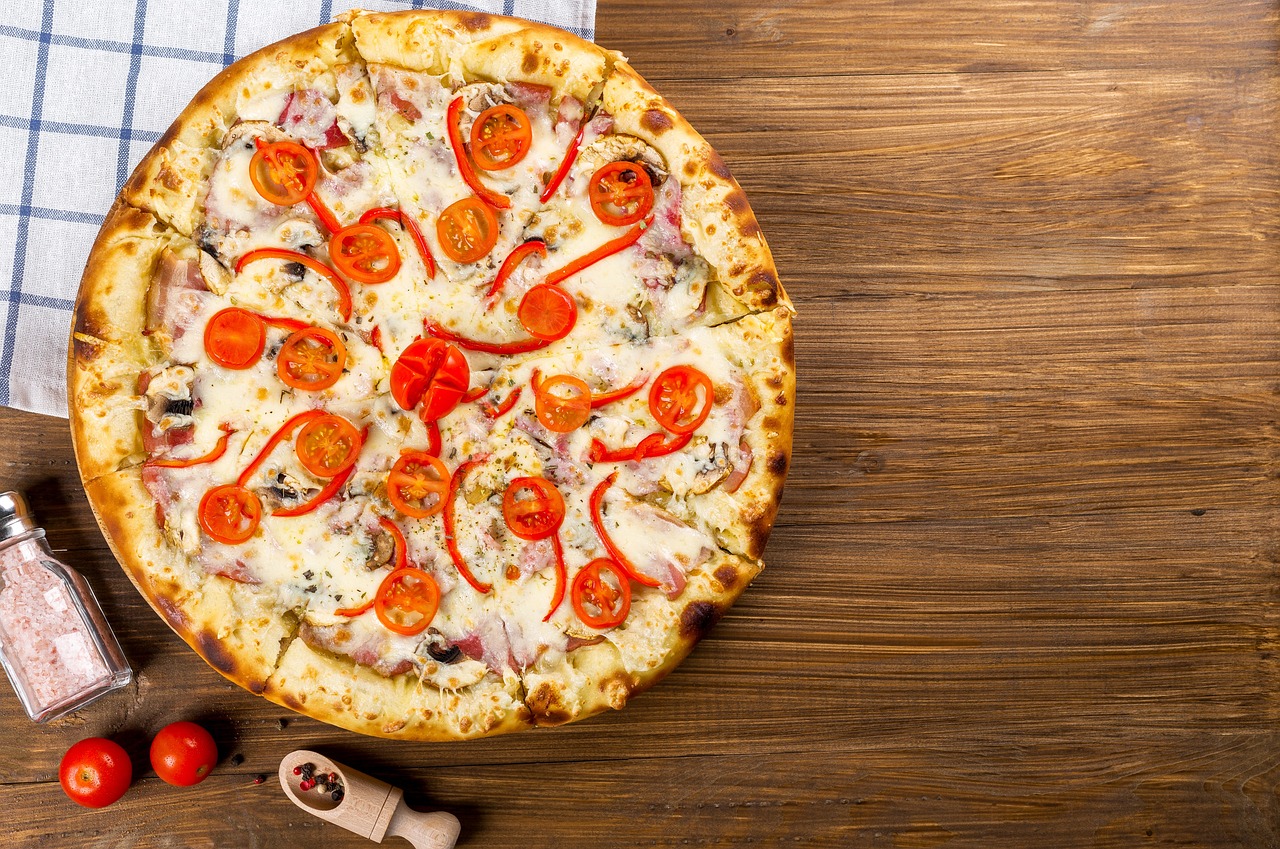
Portion Control Techniques
When it comes to keeping your pet healthy, portion control is a game changer. Think of it as the secret ingredient in your pet's diet that can make all the difference. Just like humans, pets can easily fall into the trap of overeating, especially when they see their favorite food in front of them. But fear not! With a few simple techniques, you can master the art of portion control and ensure your furry friend is getting just the right amount of nutrition.
First off, it’s essential to understand the recommended serving sizes for your pet's specific breed, age, and health condition. Pet food labels often provide guidelines, but these can vary based on the food's caloric density. For example, a high-protein kibble might require a smaller serving than a grain-heavy one. To help you navigate this, consider creating a simple table that outlines the serving sizes based on your pet's weight:
| Pet Weight (lbs) | Daily Food Amount (cups) |
|---|---|
| 5-10 | 1/4 - 1/2 |
| 10-20 | 1/2 - 1 |
| 20-40 | 1 - 1 3/4 |
| 40-60 | 1 3/4 - 2 1/4 |
Another effective technique is to measure your pet's food with a standard measuring cup rather than using the food bag or your hands. It’s easy to misjudge amounts, especially when you’re feeling generous. By being precise, you’ll avoid the temptation to overfill the bowl. Additionally, consider using a food scale for even more accuracy, particularly if your pet is on a strict diet.
Moreover, establishing a regular feeding schedule can greatly aid in portion control. Pets thrive on routine, and having set mealtimes can help them learn when to expect food, reducing the chances of begging or overindulging. You might want to try feeding your pet twice a day, splitting their daily food allowance into two meals. This not only helps with portion control but also keeps their energy levels stable throughout the day.
Lastly, be mindful of the treats you give your pet. While it’s tempting to reward them with snacks, these can quickly add up in calories. A good rule of thumb is that treats should make up no more than 10% of your pet's daily caloric intake. Instead of reaching for the bag of store-bought treats, consider healthy alternatives like carrot sticks or apple slices. Not only are they lower in calories, but they also provide additional nutrients.
In summary, mastering portion control isn’t just about measuring food; it’s about creating a balanced and healthy lifestyle for your pet. By understanding their nutritional needs, establishing a feeding routine, and being mindful of treats, you can help your furry friend maintain a healthy weight and enjoy a long, happy life.
- How do I know if I'm feeding my pet the right amount? It's best to follow the feeding guidelines on the pet food label and consult with your veterinarian for personalized advice.
- What should I do if my pet is overweight? Reduce their food intake gradually, increase exercise, and consult your vet for a tailored weight loss plan.
- Can I give my pet human food? Some human foods are safe in moderation, but avoid high-fat and salty foods. Always check with your vet first.
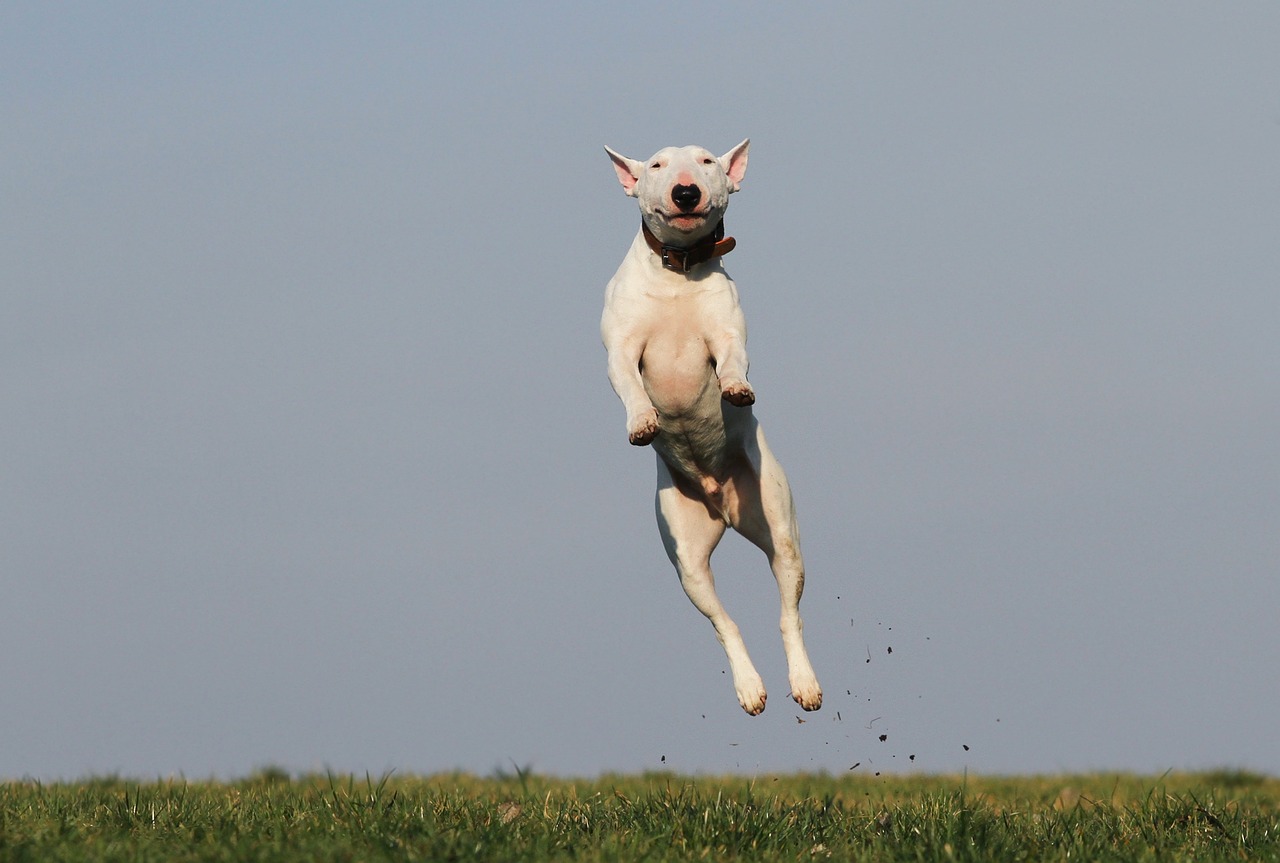
Positive Reinforcement in Training
When it comes to training your pet, positive reinforcement is one of the most effective techniques you can use. Think about it: would you rather be rewarded for good behavior or scolded for mistakes? Just like us, pets respond better when they associate their actions with something pleasant. This method encourages them to repeat the behaviors we want to see, making training a more enjoyable experience for both of you.
So, how does positive reinforcement work exactly? It’s simple! Whenever your pet exhibits a desired behavior—like eating their food without fuss—reward them immediately with a treat, praise, or even a favorite toy. The key here is timing. If you wait too long to reward them, they might not connect the dots. It’s like giving a high-five after the game is over; it just doesn’t have the same impact!
Moreover, positive reinforcement isn’t just about food. While treats are effective, they can also become a crutch. Mix it up a bit! Try using verbal praise like “Good boy!” or “You’re such a clever girl!” or even a gentle scratch behind the ears. This variety keeps your pet engaged and excited about learning. Remember, the goal is to create a positive association with mealtime and the behaviors you want to encourage.
Here’s a quick tip: consider making a training chart to track your pet's progress. This can help you visualize their achievements and keep the motivation going. You can create a simple table like the one below:
| Date | Behavior | Reward Given | Notes |
|---|---|---|---|
| 01/01/2023 | Ate all food | Small treat | Very eager! |
| 01/02/2023 | Waited patiently | Praise | Calm demeanor. |
As you can see, tracking your pet's behaviors can help you identify patterns and make adjustments as needed. If you notice that your pet is struggling with a specific behavior, you can change your approach or increase the rewards to keep them motivated. It’s all about finding what works best for your furry friend!
In addition to rewarding good behavior, it’s vital to be patient. Training takes time, and every pet learns at their own pace. If your dog or cat seems uninterested or resistant, don’t get discouraged. Instead, try to make the training sessions shorter and more frequent. Just like us, pets can get bored or overwhelmed if they have to sit through a long session.
Lastly, remember that consistency is key. Everyone in the household should use the same commands and rewards to avoid confusing your pet. If one person rewards a behavior and another scolds it, your pet will be left scratching their head, unsure of what to do. By working together as a team, you’ll create a nurturing environment that encourages your pet to thrive.
In conclusion, positive reinforcement is not just a training method; it’s a way to build a trusting relationship with your pet. By using rewards to encourage healthy eating habits and good behaviors, you’re not just teaching them; you’re making every meal a bonding experience. So, grab those treats, and let’s get training!
Q: How long should training sessions be?
A: Training sessions should ideally last between 5 to 10 minutes. Keeping them short helps maintain your pet's attention and enthusiasm.
Q: Can I use my pet's regular food as a reward?
A: Absolutely! Using your pet's regular food as a reward can help reinforce good behavior while maintaining their diet.
Q: What if my pet doesn’t seem interested in treats?
A: If your pet isn’t motivated by treats, try using verbal praise, playtime, or affection as rewards. Every pet is different, so find what excites yours!
Q: How do I know if my pet is responding to training?
A: Look for signs of improvement, like your pet following commands more quickly or showing enthusiasm during meal times. Consistency and patience are key!
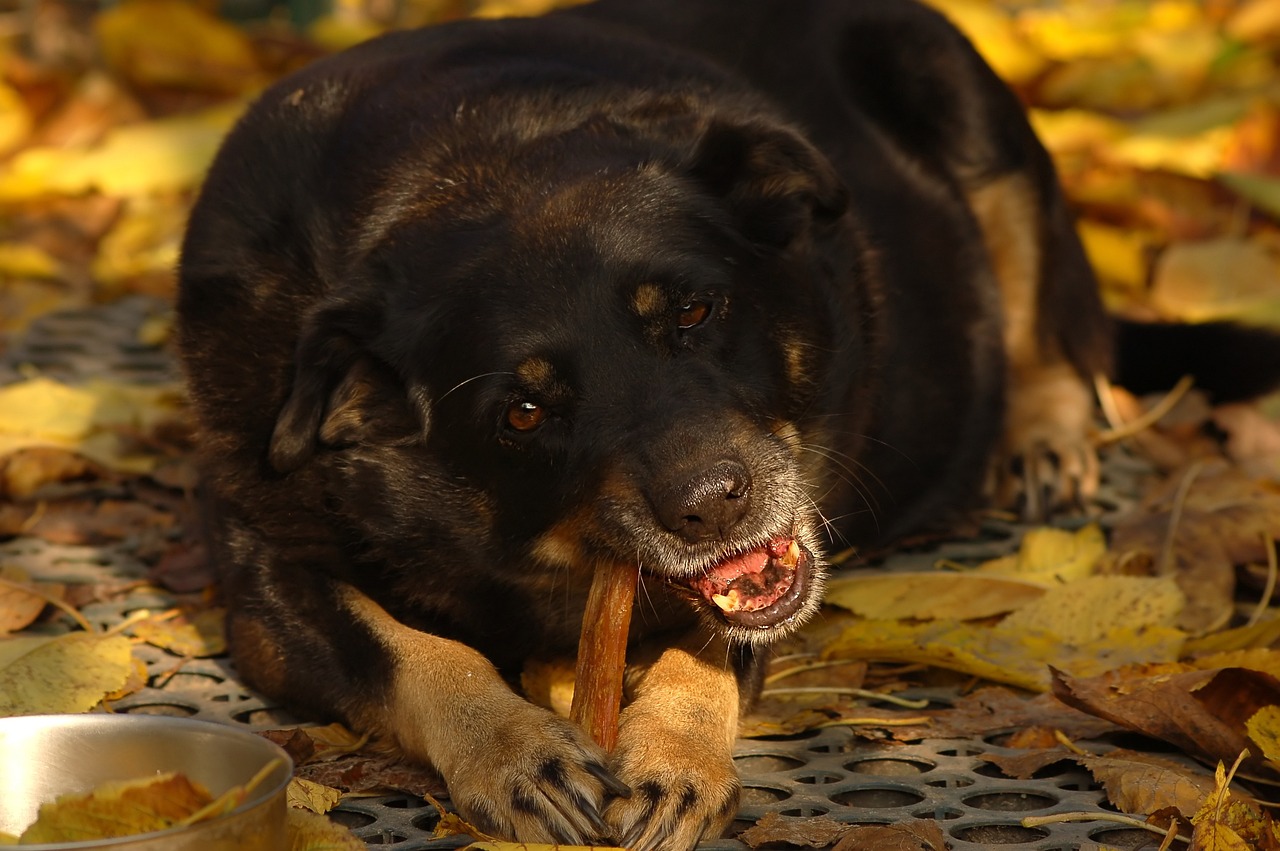
Avoiding Table Scraps
Feeding your pet table scraps might seem harmless, especially when those big, pleading eyes look up at you during dinner. However, indulging them can lead to a range of health issues that can be easily avoided. Just like us, pets thrive on a balanced diet, and human food often lacks the essential nutrients they need. In fact, many human foods are not only inappropriate but can also be toxic to pets. For example, foods like chocolate, grapes, and onions can cause serious health problems. So, while it might feel good to share your meal, it’s crucial to understand the potential risks involved.
When you give in to those puppy-dog eyes, you might inadvertently teach your pet that begging is an effective way to get what they want. This can lead to a cycle of unhealthy eating habits. Instead of sharing your plate, consider establishing a clear boundary between human food and pet food. This not only reinforces good behavior but also helps your furry friend understand that their meals come from their own bowl, not from the dinner table.
Moreover, human food is often high in calories and fat, which can contribute to obesity in pets. Obesity is not just a cosmetic issue; it can lead to serious health complications such as diabetes, joint problems, and even heart disease. By avoiding table scraps, you're taking a proactive step toward ensuring your pet maintains a healthy weight and lifestyle. If you’re worried about your pet feeling left out during family meals, try offering them a special treat designed specifically for pets. This way, they can still enjoy a little something while you keep their health in check.
It’s also important to educate other family members about the risks of feeding table scraps. Everyone in the household should be on the same page to avoid confusion for your pet. You can create a simple chart or table that outlines what foods are safe and what foods to avoid, helping to keep everyone informed. Here’s a quick reference:
| Safe Foods | Foods to Avoid |
|---|---|
| Carrots | Chocolate |
| Apples (without seeds) | Grapes and Raisins |
| Peanut Butter (unsweetened) | Onions and Garlic |
| Cooked Chicken | Fatty Foods |
In conclusion, while it may be tempting to share your food with your pet, it’s essential to prioritize their health and well-being. By avoiding table scraps, you not only help prevent obesity and other health issues, but you also encourage better eating habits. Remember, a healthy pet is a happy pet, and with a little discipline, you can ensure that your furry friend enjoys a long, vibrant life!
Q: Can I give my pet leftovers from my dinner?
A: It's best to avoid giving pets leftovers, as many human foods can be unhealthy or even toxic for them. Stick to pet-specific foods to ensure they get the right nutrients.
Q: What should I do if my pet is used to getting table scraps?
A: Gradually transition your pet to a healthier diet by reducing the amount of table scraps you give, and replace them with healthy pet treats. Consistency is key!
Q: Are there any safe human foods I can share with my pet?
A: Yes, some human foods like carrots and apples (without seeds) can be safe and healthy for pets in moderation. Always check for any potential hazards before sharing.
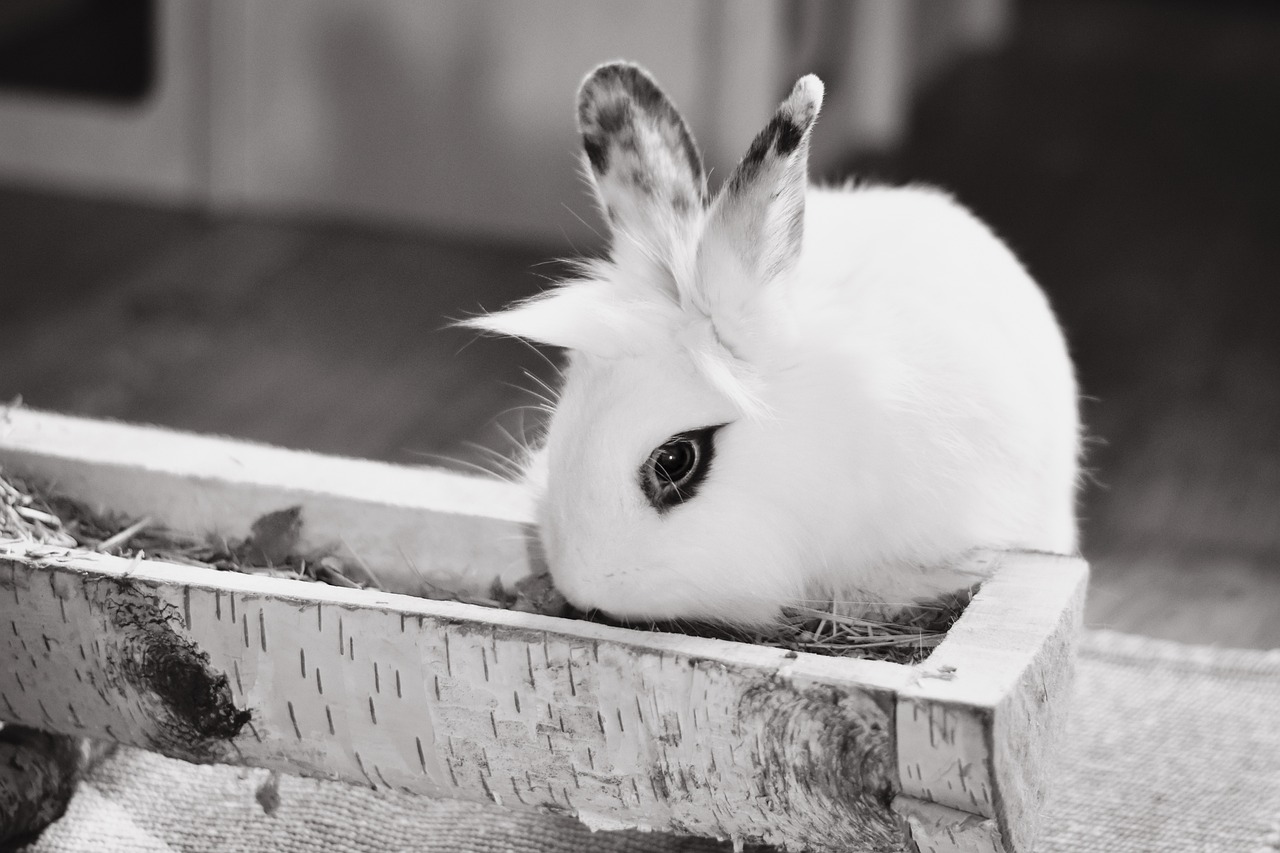
Dealing with Picky Eaters
Ah, the classic struggle of the picky eater! If you've ever watched your beloved pet turn its nose up at a perfectly good meal, you know the frustration that comes with it. It's like trying to convince a toddler to eat their vegetables—some pets just have their own ideas about what’s delicious! But don't worry, you're not alone in this battle. Many pet owners face the same challenge, and there are effective strategies to help your furry friend become a more adventurous eater.
First things first, it’s important to understand that a pet's pickiness can stem from various factors. Sometimes, it’s a matter of habit, while other times it could be linked to health issues or simply boredom with their current diet. To tackle this, start by evaluating your pet's current food. Are you offering a variety of flavors and textures? Just like humans, pets can get bored with the same old kibble day in and day out. Try introducing new, high-quality options gradually. Mixing in a little wet food can also spice things up and make their meals more appealing.
Another tactic is to create a positive mealtime environment. Make sure your pet feels comfortable during feeding times. If they seem anxious, try feeding them in a quiet area away from distractions. You might even want to use a special bowl that makes mealtime more fun, like a puzzle feeder, which can stimulate their minds while they eat. This not only encourages them to engage with their food but also turns mealtime into an exciting activity rather than a chore.
For those pets that are stubbornly picky, positive reinforcement can work wonders. If your pet tries a new food, reward them with praise or a small treat. This helps them associate new flavors with positive experiences. Remember, patience is key! It might take a few tries before they fully embrace a new dish, but consistency will pay off in the long run.
Lastly, if your furry friend remains a picky eater despite your best efforts, it may be time to consult your veterinarian. There could be underlying health issues affecting their appetite. A vet can help rule out any medical problems and provide tailored advice to ensure your pet is getting the nutrition they need.
- What should I do if my pet refuses to eat? Start by checking if the food is fresh and appealing. You can also try warming it slightly to enhance the aroma.
- How can I introduce new foods to my pet? Gradually mix new food with their current diet, increasing the new food portion over time.
- Is it okay to give my pet table scraps? It's best to avoid table scraps as they can lead to unhealthy eating habits. Stick to pet-safe treats instead.
- When should I consult a vet about my pet's eating habits? If your pet consistently refuses to eat or shows signs of distress, it's important to seek veterinary advice.
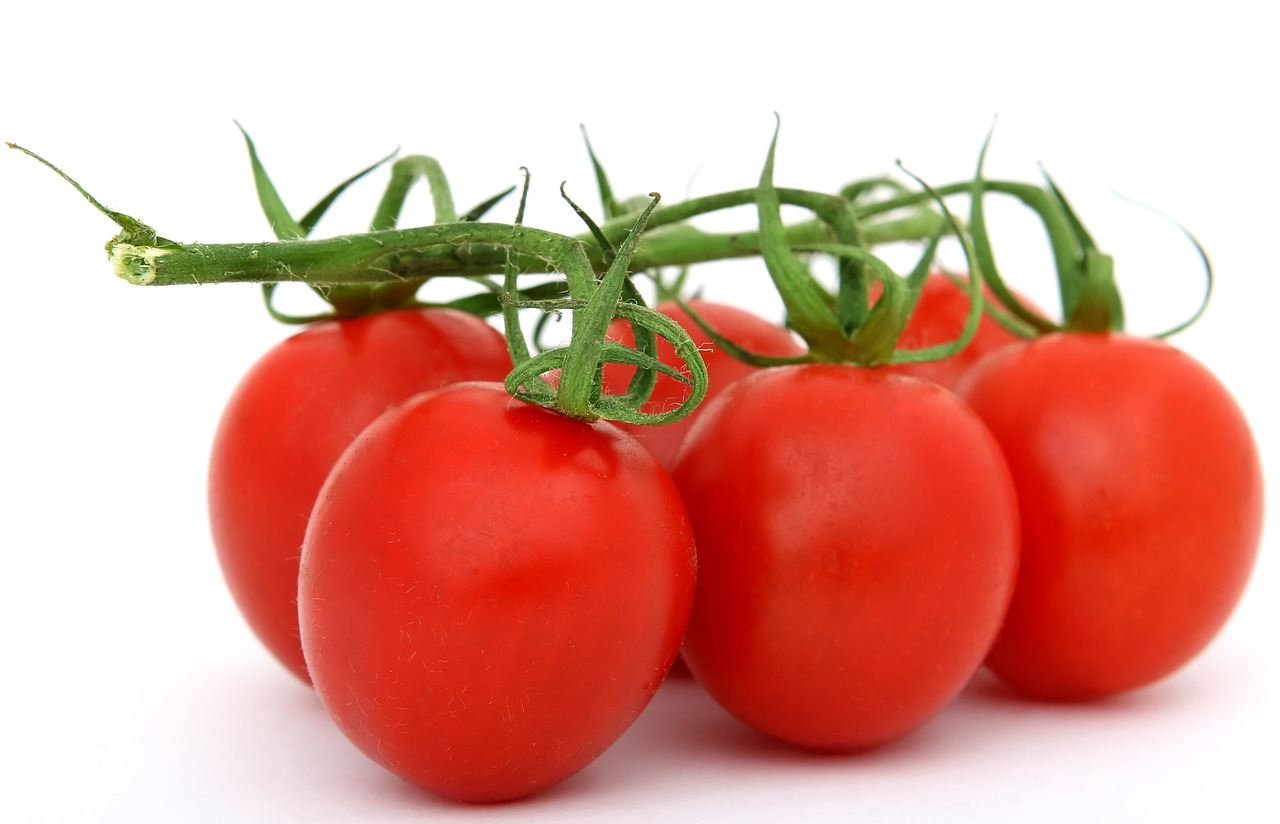
Monitoring Your Pet's Health
Keeping a close eye on your pet's health is not just a good practice; it's a vital part of being a responsible pet owner. Just like humans, pets can experience a range of health issues that can stem from poor diet, lack of exercise, or even genetic predispositions. So, how can you ensure your furry friend is thriving? First, it's essential to understand the signs of nutritional deficiencies and other health concerns. Regular check-ups with your veterinarian are crucial, but you can also monitor your pet's health at home.
One of the first things to watch for is your pet's weight. Is your dog or cat maintaining a healthy weight? Obesity can lead to serious health problems, including diabetes and joint issues. You can easily assess this by feeling their ribs; you should be able to feel them without excessive pressure. If you can't, it might be time to reevaluate their diet and activity level.
Another key indicator of health is your pet's energy level. Are they playful and active, or do they seem lethargic? A sudden change in behavior can be a red flag. For instance, if your usually energetic pup is now lounging around all day, it could indicate that something is off. Pay attention to changes in appetite as well; a decrease in food intake can signal health issues, while excessive eating could suggest emotional problems or boredom.
It's also important to monitor your pet's coat and skin. A shiny, healthy coat usually reflects a balanced diet, while dullness or excessive shedding can indicate nutritional deficiencies. Regular grooming not only keeps your pet looking great but allows you to spot any unusual lumps, bumps, or skin irritations that may need veterinary attention.
Here are some common signs of nutritional deficiencies to look out for:
- Skin Issues: Dry, flaky skin or excessive itching can be a sign of a lack of essential fatty acids.
- Dental Problems: Bad breath or gum disease may indicate a need for better dental care or specific nutrients.
- Behavioral Changes: Increased aggression or anxiety can sometimes be linked to poor nutrition.
Don't forget that regular veterinary visits are crucial. Your veterinarian can provide tailored advice based on your pet's specific needs, including blood tests that can reveal hidden deficiencies. If you notice any of the signs mentioned above, don't hesitate to consult with your vet. They can help you create a balanced diet plan that supports your pet's health and well-being.
Lastly, consider keeping a health journal for your pet. Documenting their eating habits, weight changes, and any unusual behaviors can provide valuable insights during vet visits. It’s like keeping a diary for your furry friend, helping you stay proactive rather than reactive when it comes to their health.
- How often should I take my pet to the vet? - It's generally recommended to take your pet for a check-up at least once a year, but older pets or those with health issues may need more frequent visits.
- What should I do if my pet is overweight? - Consult your vet for a tailored weight loss plan that includes a balanced diet and regular exercise.
- Are there specific signs I should look for in my pet's health? - Yes, watch for changes in weight, energy level, appetite, and coat condition, as these can indicate health issues.

Involving the Whole Family
Training your pet to eat well isn’t just a solo endeavor; it’s a family affair! When everyone in the household participates in the feeding process, it creates a consistent and supportive environment for your furry friend. Imagine a well-oiled machine where every member plays a role in ensuring your pet develops healthy eating habits. This not only strengthens the bond between your pet and the family but also reinforces the importance of a nutritious diet.
First off, it’s essential to establish a unified approach to feeding. If one family member allows the pet to indulge in treats while another strictly adheres to the feeding schedule, it can create confusion and stress for your pet. By discussing and agreeing on a set of rules regarding feeding times, types of food, and portion sizes, you can ensure that your pet knows what to expect. This clarity can significantly reduce anxiety for your pet, making mealtime a more enjoyable experience.
Another great way to involve the whole family is by assigning specific responsibilities. For instance, one person can be in charge of measuring the food, while another can handle the feeding. This not only makes it easier for everyone but also teaches kids about responsibility and the importance of proper nutrition. You might even consider creating a simple
| Family Member | Responsibility |
|---|---|
| Mom | Measuring food portions |
| Dad | Feeding the pet |
| Child 1 | Refilling water bowl |
| Child 2 | Cleaning feeding area |
Involving children in the feeding process can also be a fantastic educational opportunity. You can teach them about the different types of pet food, what ingredients are beneficial, and why certain foods should be avoided. This not only fosters a sense of ownership over the pet’s health but also instills lifelong lessons about nutrition and care.
Moreover, make feeding time a fun and interactive experience. You could turn it into a little game where family members take turns calling your pet to the feeding area. This adds excitement to mealtime and makes your pet look forward to eating. You might even create a little song or chant that everyone can sing as they prepare the meal! It may sound silly, but these small rituals can enhance the bond between your pet and the family.
Lastly, don’t forget to celebrate milestones! If your pet tries a new food or achieves a healthy weight, gather the family to acknowledge this accomplishment. Positive reinforcement isn’t just for pets; it works for humans too! A simple family gathering or a special treat can make everyone feel involved and appreciated, reinforcing the idea that you’re all in this together.
- Q: How can I ensure my children are feeding the pet properly?
A: Supervise them initially and explain the importance of measuring food and sticking to the schedule. - Q: What if family members disagree on what to feed the pet?
A: Have a family meeting to discuss and agree on a feeding plan that everyone can follow. - Q: Can involving kids in pet care help them develop responsibility?
A: Absolutely! It teaches them about caring for others and the importance of nutrition.
Frequently Asked Questions
- Why is it important to train my pet to eat well?
Training your pet to eat well is crucial for their overall health and well-being. Proper feeding habits can prevent obesity, promote better digestion, and enhance their vitality. Just like us, pets thrive on a balanced diet, and establishing good eating patterns sets them up for a healthier life.
- How can I determine my pet's nutritional needs?
Every pet is unique, and their nutritional needs depend on factors like age, breed, and health status. Consult your veterinarian to get personalized advice on the best diet for your furry friend. They can help you understand the specific nutrients your pet requires to stay healthy and active.
- What is the best way to establish a feeding schedule?
Creating a consistent feeding routine is key. Try feeding your pet at the same times each day, which helps them learn when to expect meals. This not only reduces anxiety but also aids in better digestion and portion control. Think of it like setting a clock; once your pet gets used to it, they’ll be ready and waiting!
- How do I choose the right food for my pet?
Selecting high-quality food tailored to your pet’s specific needs is essential. Always read the labels! Look for ingredients that are appropriate for your pet's age and health. If you're unsure, your vet can recommend the best options that will keep your pet healthy and happy.
- What are effective portion control techniques?
Proper portion control is vital for maintaining a healthy weight. Use measuring cups to serve the right amount of food based on your pet’s size and activity level. Avoid free-feeding, as it can lead to overeating. Think of it like a buffet; it’s easy to overindulge when food is always available!
- How can positive reinforcement help with training?
Positive reinforcement is a powerful tool in encouraging healthy eating habits. Reward your pet with treats or praise when they try new foods or eat their meals on time. This creates a positive association with eating well, making mealtime a fun and rewarding experience for them.
- Why should I avoid feeding my pet table scraps?
Feeding pets table scraps can lead to unhealthy eating patterns and obesity. Human food often contains ingredients that are harmful to pets. Instead, provide them with healthy alternatives that meet their nutritional needs. Think of it like a special diet; it’s best for them in the long run!
- What should I do if my pet is a picky eater?
Dealing with picky eaters can be frustrating! Try offering different textures and flavors to see what they prefer. Gradually introduce new foods alongside their favorites to encourage them to eat. Remember, patience is key; it might take some time to find the right combination!
- How can I monitor my pet's health effectively?
Regularly assess your pet's health by observing their weight, energy levels, and coat condition. If you notice any signs of nutritional deficiencies, such as lethargy or changes in appetite, consult your veterinarian. They can provide guidance on adjustments needed in their diet to ensure your pet thrives.
- How can I involve my family in pet feeding?
Involving the whole family in feeding your pet creates a consistent and supportive environment. Assign specific feeding responsibilities to each family member and encourage everyone to participate in training. This not only helps your pet adjust but also strengthens family bonds through shared care.

